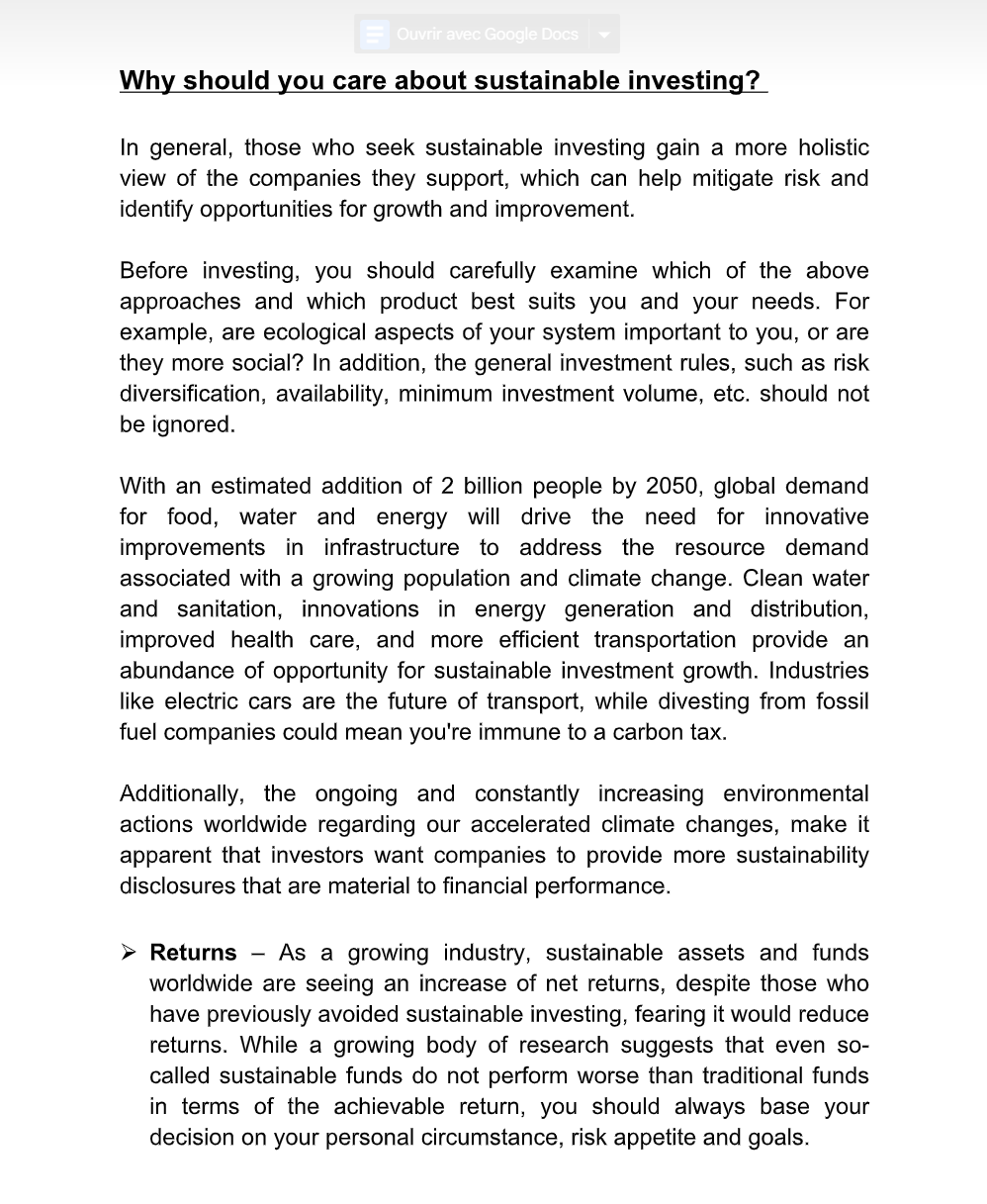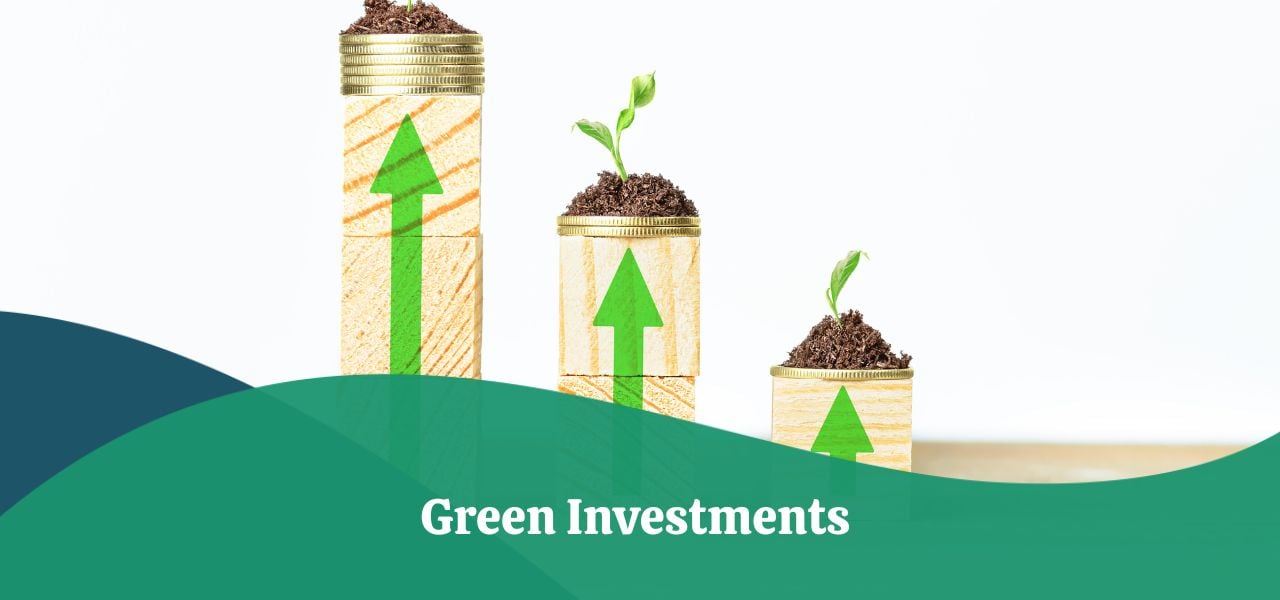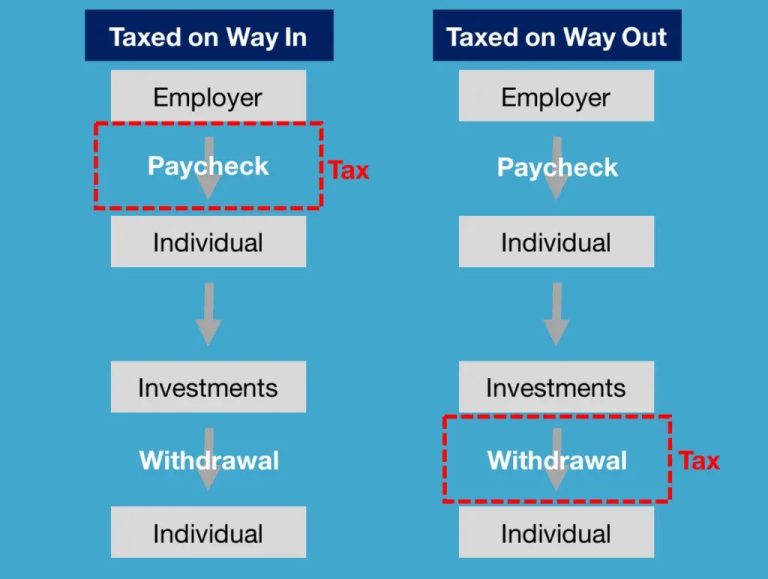Investing has evolved tremendously over the years, and with growing awareness of environmental issues, sustainable investing has come to the forefront. You may be wondering: why should you care about sustainable investing? This post will take you on a journey through the essence of sustainable investing, the types of green investments available, and how you can incorporate them into your own portfolio. Let’s dive in!
Why Should You Care About Sustainable Investing?

Sustainable investing is more than just a trend; it’s a commitment to creating a better world while also making sound financial decisions. More investors are adopting strategies that look beyond the traditional methods of generating returns. They are interested in the impact their investments have on the environment and society. By choosing sustainable investments, you are not just growing your wealth; you are also contributing to combating climate change, promoting social justice, and supporting companies that prioritize ethical practices.
In addition, studies have shown that companies with strong sustainability practices often outperform their traditional counterparts over the long run. This means that not only are you doing good by investing sustainably, but you could also be securing better returns for your future. The call for action is clear: the decisions you make today regarding your investments can shape the market of tomorrow and influence the planet’s health.
Understanding Green Investments: Types, Risks & Strategies

Green investments cover a broad range of financial instruments that aim to support environmentally sustainable initiatives. Understanding these types can help you make informed decisions about where to put your money. Let’s explore the different types of green investments available.
1. Green Stocks: These are shares in companies with sustainable practices, such as renewable energy, waste management, and sustainable agriculture. By investing in green stocks, you’re not just betting on the company’s profitability; you’re also supporting its commitment to environmental responsibility.
2. Green Bonds: These fixed-income securities are issued to fund projects that have positive environmental impacts. Through green bonds, investors can earn interest while contributing funds to initiatives like wind farms or energy-efficient buildings. They represent a reliable way to integrate sustainability into your fixed-income portfolio.
3. ESG Funds: ESG stands for Environmental, Social, and Governance. These funds are designed around companies that meet specific criteria in these categories, making them attractive options for socially conscious investors. The beauty of ESG funds is their diversified approach, allowing you to invest broadly in sustainable companies across various sectors.
4. Impact Investments: These are investments made with the intention to generate measurable social and environmental impact alongside a financial return. Impact investing is ideal for those who want to make a difference while still receiving a financial payout. This could range from investing in affordable housing projects to microfinance efforts in developing countries.
While the benefits of green investments are numerous, it’s also essential to be aware of the potential risks associated with them:
1. Market Volatility: Sustainable sectors can experience fluctuations due to regulatory changes, technological advancements, and competitor actions. Understanding market dynamics is crucial when investing.
2. Greenwashing: Some companies falsely promote themselves as “green” without substantial commitments to sustainability. Research and due diligence are necessary to avoid falling for greenwashing tactics.
3. Lack of Information: While the field of sustainable investing is growing, some sectors might not have enough data to evaluate their sustainability effectively. This can make it challenging to make well-informed investment choices.
To navigate these risks effectively, consider implementing a solid investment strategy:
1. Diversify Your Portfolio: As with any investment strategy, diversification is key. Invest across various sectors and asset classes to mitigate risks associated with any single investment.
2. Conduct Thorough Research: Make it a habit to stay informed and read about the companies you wish to invest in. Look for sustainability reports, financial performance, and government regulations that may influence their sustainability practices.
3. Align Investments with Your Values: Determine what you are passionate about and where you want to make an impact. This alignment can make investing feel more meaningful and can lead to a more disciplined investment strategy.
4. Revisit and Adjust Your Portfolio: The sustainable investment landscape is continually evolving. Regularly review your investments to ensure they still align with your values and offer good returns. Don’t be afraid to make changes as circumstances and information evolve.
Sustainable investing isn’t just a trend—it’s a growing movement that recognizes the responsibility we all have toward our planet and society. By exploring the options available and understanding the risks, you can contribute positively while securing a financial future for yourself and generations to come.
In conclusion, the world of sustainable investing offers a wealth of opportunities for those willing to look beyond conventional investing. Whether you are a seasoned investor or a newcomer to the financial world, integrating sustainable practices into your investment strategy can lead to positive outcomes for both your portfolio and the planet. Start exploring the various options available, and take steps toward a more sustainable financial future today!


